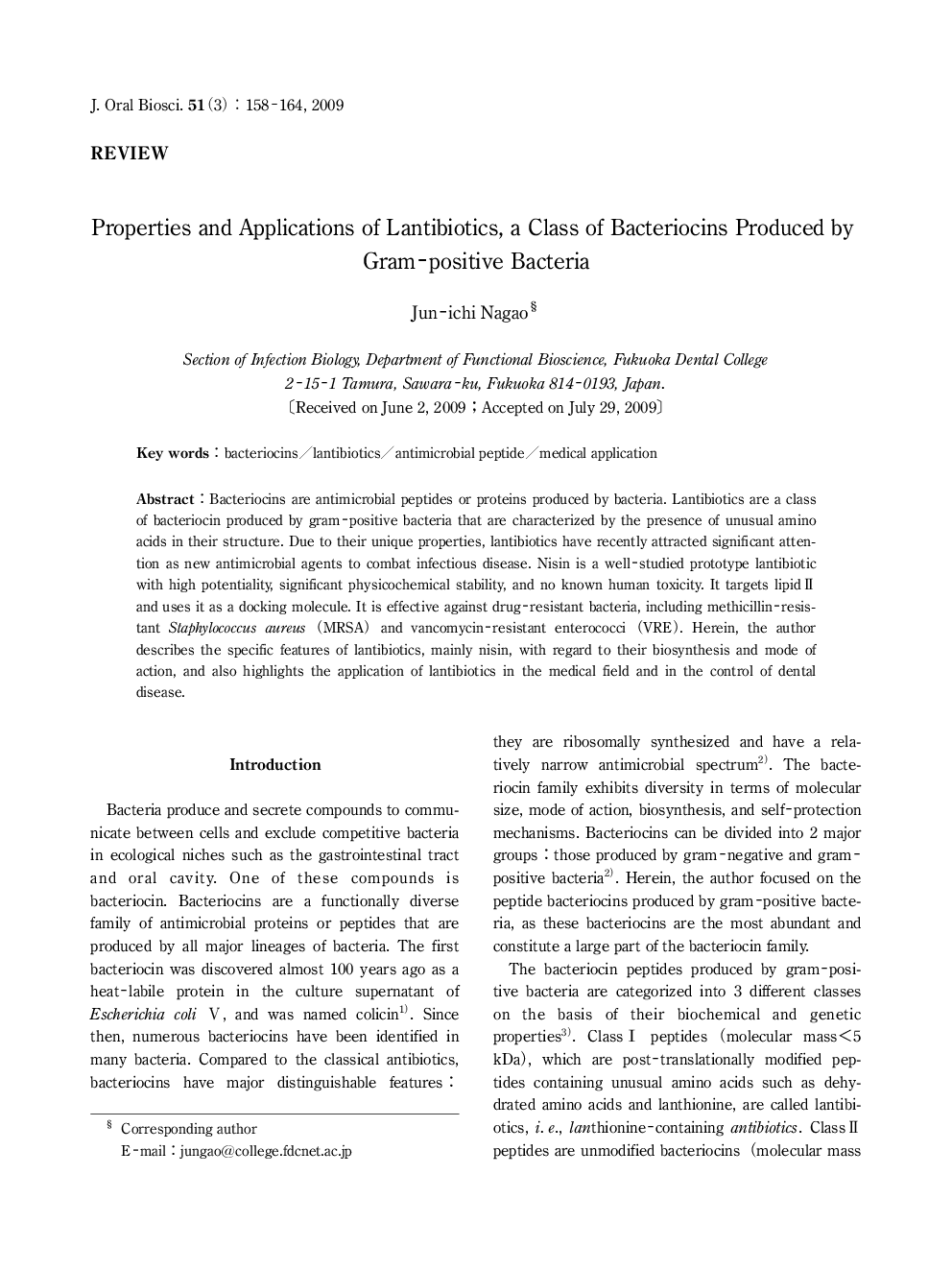| Article ID | Journal | Published Year | Pages | File Type |
|---|---|---|---|---|
| 2776993 | Journal of Oral Biosciences | 2009 | 7 Pages |
Bacteriocins are antimicrobial peptides or proteins produced by bacteria. Lantibiotics are a class of bacteriocin produced by gram-positive bacteria that are characterized by the presence of unusual amino acids in their structure. Due to their unique properties, lantibiotics have recently attracted significant attention as new antimicrobial agents to combat infectious disease. Nisin is a well-studied prototype lantibiotic with high potentiality, significant physicochemical stability, and no known human toxicity. It targets lipid It and uses it as a docking molecule. It is effective against drug-resistant bacteria, including methicillin-resistant Staphylococcus aureus (MRSA) and vancomycin-resistant enterococci (VRE). Herein, the author describes the specific features of lantibiotics, mainly nisin, with regard to their biosynthesis and mode of action, and also highlights the application of lantibiotics in the medical field and in the control of dental disease.
